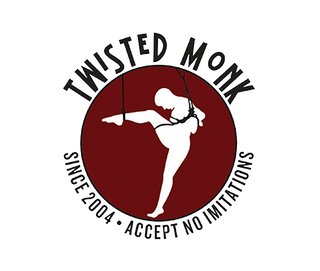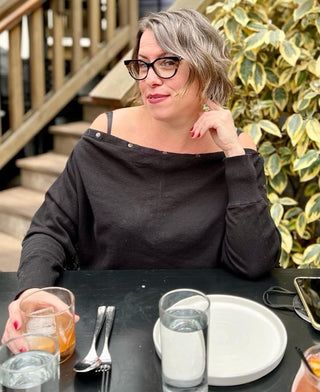No kink space or event can be all things to all people. Still, there’s room for improvement in making LGBTQ+ people feel safe and supported in the kink world. Event organizers must create opportunities for LGBTQ+ people to explore sexuality in a safe, welcoming space.
Here are six ways to help make kink spaces and events more welcoming for LGBTQ+ people:
Use inclusive language
If you’re an organizer that regularly hosts sex-positive events, one easy way to make LGBTQ+ attendees feel welcome is to use inclusive language. Steer clear of binary assumptive language, always. And if you mess up, it happens. The culture around gender identity is ever-evolving. Own the mistake and try to do better the next time. This Teen Vogue article is a good basic guide on how to use gender-neutral words.
Accessibility
Kink is an integral part of life for some LGBTQ+ people with disabilities, and organizers must look beyond catering to cisgender, able-bodied attendees. Unfortunately, many events, especially those held in older buildings, aren’t accessible for disabled people. Suppose a space isn’t accessible for all bodies. In that case, event organizers need to be as transparent as possible about the limitations of the event.
Ensure safety at events
A new publication from the Bureau of Justice Statistics supports the overwhelming evidence we already have that LGBTQ+ people (particularly young adults, people of color, women, and bisexual people) are at increased risk of violent victimization compared to their straight and cisgender counterparts. Studies suggest that around half of transgender people and bisexual women experience sexual violence at some point in their lifetimes. According to the Bureau of Justice Statistics, lesbian and gay people experience violent victimization at twice the rate of straight people; trans people at 2.5 times the rate. Bisexual people experience violence at the highest rates, at almost seven times the rate of straight people.
Organizers should create and implement house rules that cultivate a sex-positive space that keeps both attendees and organizers safe. Think everything from consent and protection to substance use and fluid exchange. A space that is safe for the LGBTQ+ community to explore pleasure beyond traditional gender and sexual orientation norms. Consent and inclusion, in the kink community, is everything. And labeling a space as inclusive, doesn’t always make it so.
Cici (she/her), pansexual, 26, from Colorado, is a sexual assault survivor who likes to attend kink parties. “My history makes it really hard to let my guard down in a sexual setting. But, trust, I love it once I can get my mind to that place, but it takes some mental gymnastics,” she says. “Feeling safe, and supported, in case a scene goes south, makes all the difference for me, as a sexual assault survivor.”
Provide gender-neutral or all-gender bathrooms
The needs of all attendees deserve to be met, including making gender-neutral bathrooms more widely available. Transgender, non-binary, and gender nonconforming people should have a safe place to pee, wash their hands, check their makeup, etc. “If I’m at a queer-focused play party, I feel safer using the bathroom than at straight events,” says Jazmine (they/them), a 32-year-old non-binary person from Brooklyn, NY. “Most kink events are primarily attended by cisgender people, so using a binary bathroom makes me uncomfortable. I shouldn’t have to categorize myself for the sake of what is usually a simple task for most people.”
Don’t assume sexual roles
In a BDSM scene, a top is the person in control during the pre-planned event or play. A bottom is a person receiving the action. While these terms describe physical or emotional behaviors, normative language associates these terms with gender roles. (BDSM doesn’t have to be sexual in nature; studies show that some people pursue BDSM dynamics for the pleasant altered states of consciousness these activities produce.)
Ever (they/them), a 34-year-old trans man from California, sees a lot of assumptions made about gender roles and sexual positioning at local kink events. “I pass as masculine as a trans male,” they share. “In kink play spaces, a lot of people automatically assume that I must be a Dominant top, which isn’t the case. I prefer to bottom—I find that position most pleasurable for me, but I wouldn’t necessarily say I’m a submissive.”
The takeaway? Not all tops are masculine, and not all bottoms are feminine. Don’t allow normative understandings of gender roles to guide your kinky interactions.
Listen to feedback
If you’re a kink event organizer, give attendees an opportunity to share their post-event feedback.
There are a few things Jenna (they/them), a 44-year-old bisexual from Oregon, would like to see change at a monthly kink event they attend. “I have attended this particular event several times and have discussed it at length with my kinky friends,” they shared. “It would be so much better with some minor tweaks, but I’m not sure who to talk with. I’m not exactly in the space to provide constructive feedback during the actual event.”
If you’re an event organizer, follow up with attendees in a timely manner. It’s OK to keep surveys short and sweet, just be sure to leave room for respondents to elaborate on their experience. Open-ended questions like, “What did you like?”, “What did you not like?”, and “Is there anything else you’d like to share with us?” can prompt valuable feedback.
So, speak up if you’re an LGBTQ+ kink eventgoer and want to see something different. It doesn’t matter if it’s your first event or your 500th, your experience is valid, and your feedback will help improve future kink events.
Ryn Pfeuffer (she/her) is a queer sex writer, sex worker, and kink enthusiast in Seattle. Find her writing work here, or follow her on Twitter or Instagram.

